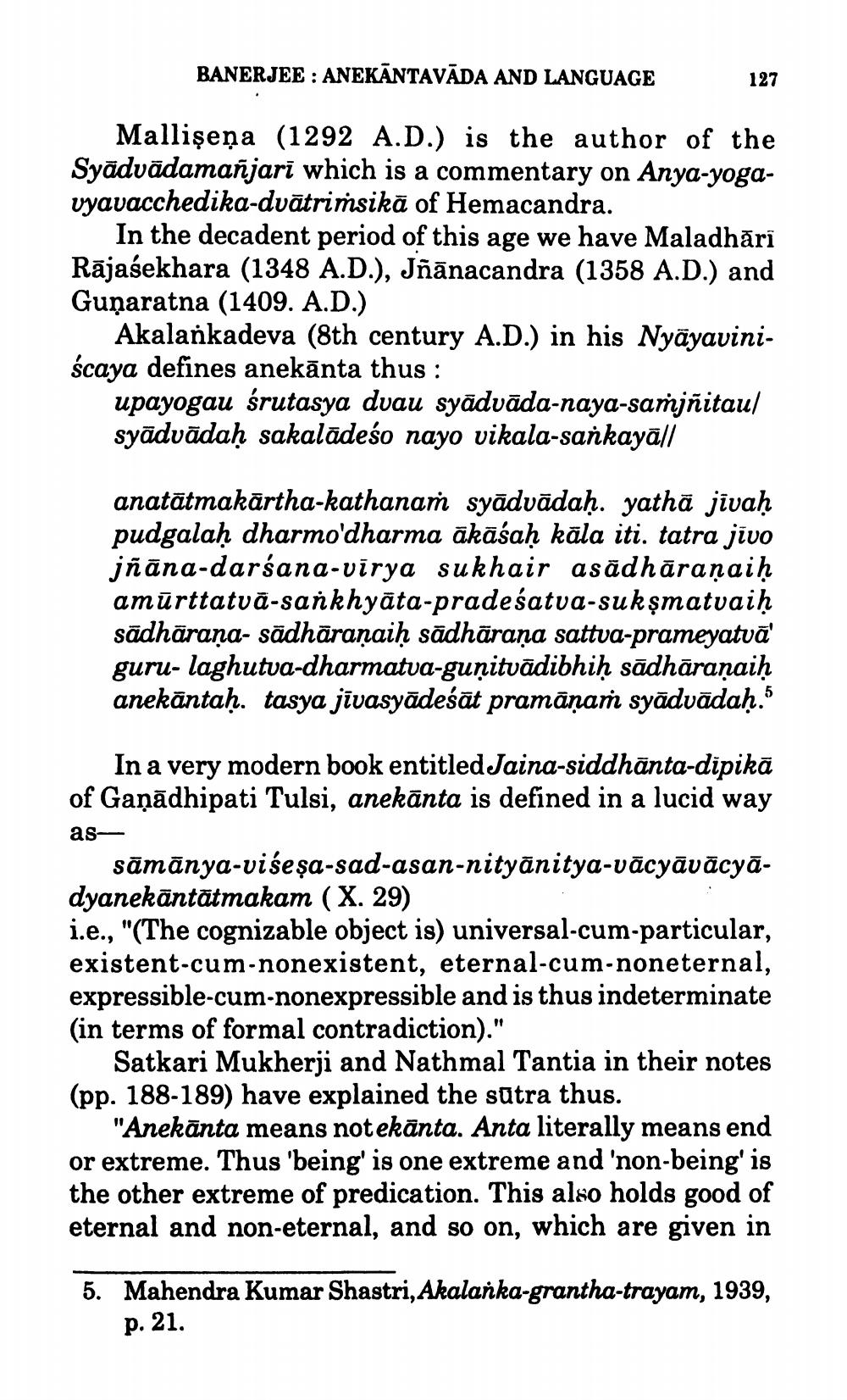________________
BANERJEE : ANEKĀNTAVĀDA AND LANGUAGE
127
Mallisena (1292 A.D.) is the author of the Syāduādamañjarī which is a commentary on Anya-yogavyavacchedika-dvātrimsikā of Hemacandra.
In the decadent period of this age we have Maladhārī Rājasekhara (1348 A.D.), Jñānacandra (1358 A.D.) and Gunaratna (1409. A.D.)
Akalankadeva (8th century A.D.) in his NyayaviniŚcaya defines anekānta thus :
upayogau śrutasya dvau syādvāda-naya-samjñitaul syādvādaḥ sakalādeso nayo vikala-sankayāll
anatātmakārtha-kathanaṁ syādvādah. yathā jīvaḥ pudgalah dharmo'dharma ākāśaḥ kāla iti. tatra jivo jñāna-darśana-virya sukhair asādhāranaiḥ amūrttatva-sankhyāta-pradeśatua-suksmatvaiḥ sādhārana- sädhäranaiḥ sādhārana sattva-prameyatvā' guru-laghutva-dharmatva-guņituādibhiḥ sādhāraṇaiḥ anekāntaḥ. tasya jīvasyādeśāt pramānam syādvādah."
In a very modern book entitled Jaina-siddhānta-dipikā of Gaņādhipati Tulsi, anekānta is defined in a lucid way as
sāmānya-viseșa-sad-asan-nityānitya-vācyāvācyādyanekāntātmakam (X. 29) i.e., "(The cognizable object is) universal-cum-particular, existent-cum-nonexistent, eternal-cum-noneternal, expressible-cum-nonexpressible and is thus indeterminate (in terms of formal contradiction)."
Satkari Mukherji and Nathmal Tantia in their notes (pp. 188-189) have explained the satra thus.
"Anekānta means notekānta. Anta literally means end or extreme. Thus 'being' is one extreme and 'non-being' is the other extreme of predication. This also holds good of eternal and non-eternal, and so on, which are given in
5. Mahendra Kumar Shastri, Akalanka-grantha-trayam, 1939,
p. 21.




